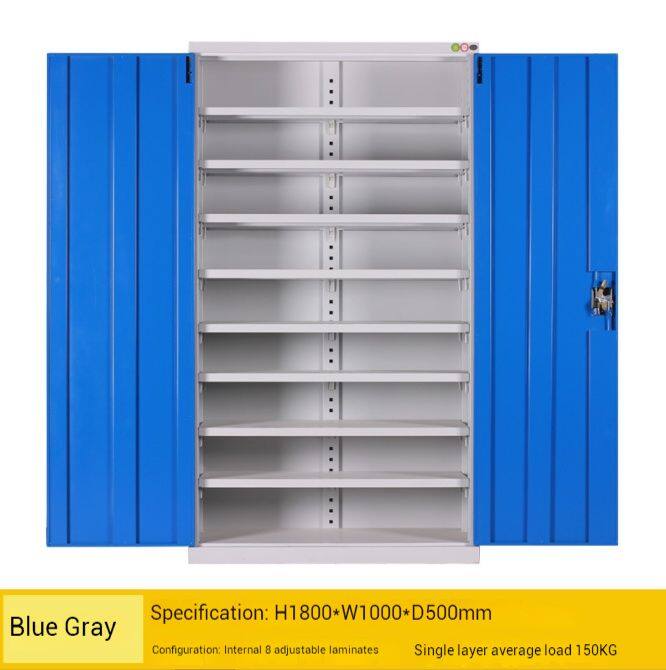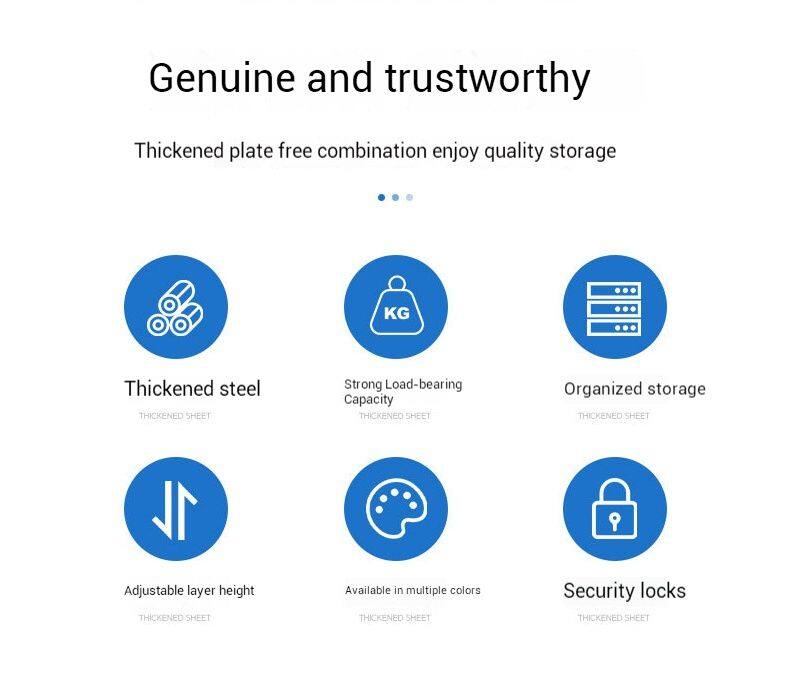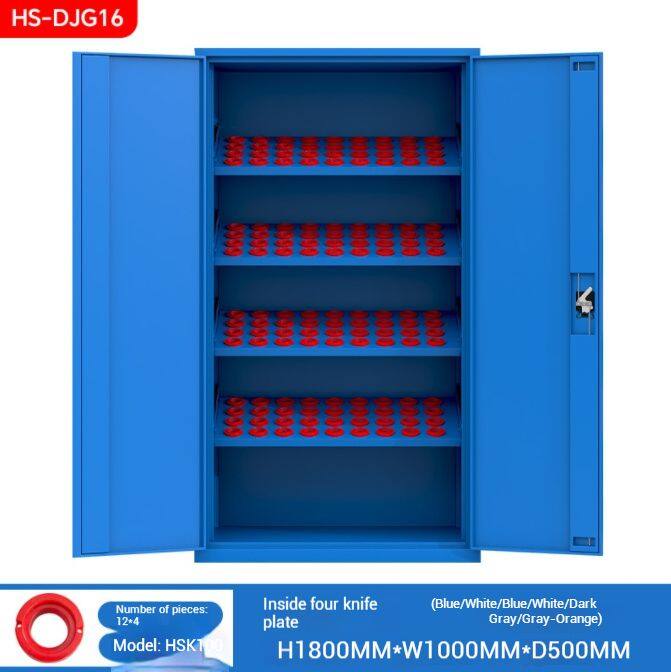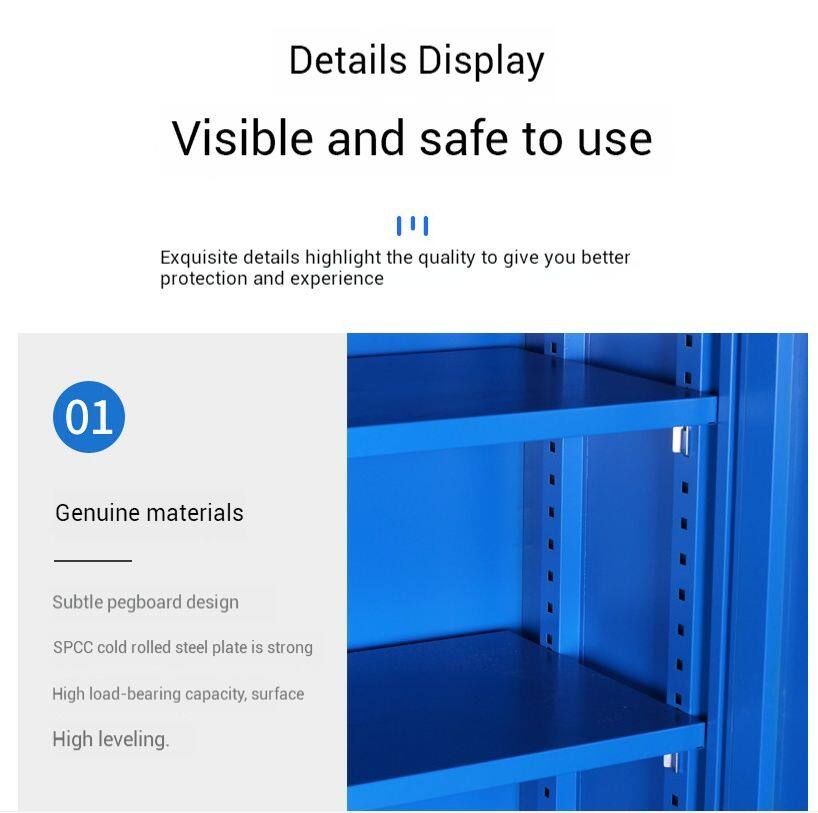-
 Sarah
Hi there! Welcome to my shop. Let me know if you have any questions.
Sarah
Hi there! Welcome to my shop. Let me know if you have any questions.
Your message has exceeded the limit.

Lab Equipment Security: Tool Cabinet Solutions for Research Laboratories
2025-11-05 13:54:20
Research laboratories house valuable scientific instruments, delicate equipment, and specialized tools that require secure storage while maintaining accessibility for authorized personnel. Laboratory tool storage solutions must balance security requirements with the need for efficient research workflows, proper equipment maintenance, and compliance with various regulatory standards. This comprehensive guide explores secure tool cabinet solutions designed specifically for research environments and their role in protecting valuable laboratory assets.

Understanding Laboratory Security Requirements
Research laboratories face unique security challenges including equipment theft, unauthorized access, and potential contamination of sensitive research materials. Tool storage systems must provide comprehensive security while supporting the collaborative nature of scientific research. The ability to control access to expensive equipment and potentially hazardous materials represents a critical requirement for laboratory operations.
Security considerations extend beyond simple theft prevention to include equipment protection, inventory control, and compliance with various regulations including HIPAA, FDA, and institutional security policies. Laboratory tool cabinets must support these diverse security requirements while maintaining the accessibility needed for productive research activities and collaborative scientific work.
Advanced Access Control Systems
Modern laboratory tool cabinets incorporate sophisticated access control systems that regulate who can access specific equipment and when. Biometric authentication, keycard access, and digital code systems provide multiple layers of security while maintaining access logs for audit purposes. Some systems integrate with institutional security networks for centralized management and monitoring.
Access control benefits extend to supporting various security levels within the same laboratory. Different research areas may require different security protocols based on equipment sensitivity or research classification. Laboratory tool cabinets can be configured with tiered access systems that provide appropriate security for different equipment types while supporting collaborative research needs.

Environmental Protection and Equipment Preservation
Research equipment often requires specific environmental conditions to maintain accuracy and functionality. Laboratory tool cabinets should provide climate-controlled storage that protects sensitive instruments from temperature fluctuations, humidity, and contamination. Some cabinets feature specialized compartments with individual environmental controls for different equipment types.
Environmental protection extends to supporting various research methodologies and equipment types. Analytical instruments may need vibration isolation, while optical equipment might require light protection. Some laboratory tool cabinets incorporate specialized features like anti-static surfaces, electromagnetic shielding, or cleanroom-compatible construction that protect sensitive equipment during storage.
Integration with Laboratory Management Systems
Modern research laboratories utilize sophisticated management systems for inventory tracking, equipment calibration, and maintenance scheduling. Tool storage solutions should integrate with these systems through barcode scanning, RFID technology, or digital inventory management. This integration creates comprehensive equipment management that supports research efficiency and regulatory compliance.
System integration benefits extend to supporting various laboratory operations including equipment sharing between research groups, maintenance scheduling, and usage tracking. Some laboratory tool cabinets incorporate automated inventory management that alerts staff when equipment requires calibration or maintenance. These integration capabilities enhance laboratory efficiency and support compliance with quality management systems.
Supporting Collaborative Research
Research laboratories often serve multiple research groups, departments, or institutions, requiring equipment sharing and collaborative access. Tool storage systems must accommodate this collaborative nature while maintaining security and accountability. Some cabinets feature shared access protocols that enable authorized users from different groups while maintaining comprehensive usage tracking.
Collaboration benefits extend to supporting multi-institutional research projects and shared equipment facilities. Laboratory tool cabinets can be configured with access schedules that accommodate different research groups while preventing conflicts. Some systems support remote access requests and approval workflows that facilitate collaboration while maintaining security protocols.

Compliance with Research Regulations
Research laboratories must comply with various regulations governing equipment security, documentation, and access control. Tool storage systems support compliance through organized storage that facilitates proper documentation, audit trails, and security procedures. The systematic arrangement enables laboratories to demonstrate compliance during institutional audits and regulatory inspections.
Regulatory compliance extends to supporting various research requirements including controlled substance handling, human subject research, and animal research protocols. Laboratory tool cabinets can be configured with specialized security features that support compliance with these various regulations while maintaining research efficiency. These compliance features protect research institutions from regulatory issues and support continued funding eligibility.
Specialized Storage for Different Research Disciplines
Different research disciplines require specialized equipment storage solutions tailored to their specific needs. Chemistry laboratories may need corrosion-resistant storage for chemical analysis equipment. Biology laboratories might require climate-controlled storage for sensitive biological instruments. Physics laboratories could need vibration isolation for precision measurement equipment.
Discipline-specific storage solutions enable research institutions to standardize on storage systems while meeting diverse research requirements. Some laboratory tool cabinets feature modular designs that can be customized for different research areas while maintaining consistent security and organization standards. This adaptability supports diverse research programs while protecting valuable equipment investments.
Emergency Response and Disaster Recovery
Research laboratories must prepare for various emergency scenarios including fires, floods, or security breaches. Tool storage systems should support emergency response through features that facilitate quick equipment evacuation or secure lockdown procedures. Some cabinets incorporate emergency access protocols that enable rapid response while maintaining security when possible.
Emergency preparedness benefits extend to supporting disaster recovery planning and business continuity. Laboratory tool cabinets can be integrated with emergency notification systems that automatically secure sensitive equipment during emergencies. Some systems feature remote access capabilities that enable authorized personnel to manage security during off-site emergencies. These emergency response features protect valuable research assets and support continuity of research operations.

Cost-Effectiveness and Investment Protection
Research equipment represents substantial investments that require protection to maximize return on investment and research productivity. Secure tool storage prevents equipment theft, damage, or unauthorized use that could result in costly replacements or research delays. The ability to maintain proper equipment storage conditions extends equipment life and reduces maintenance costs.
Cost-effectiveness extends to supporting various research funding requirements and institutional objectives. Proper equipment security and documentation strengthen grant applications and demonstrate responsible stewardship of research funds. The ability to maintain comprehensive equipment tracking and security supports compliance with funding agency requirements and protects future research funding opportunities.
Tags: Lab Equipment Security, Tool Cabinet Solutions, Research Laboratories

